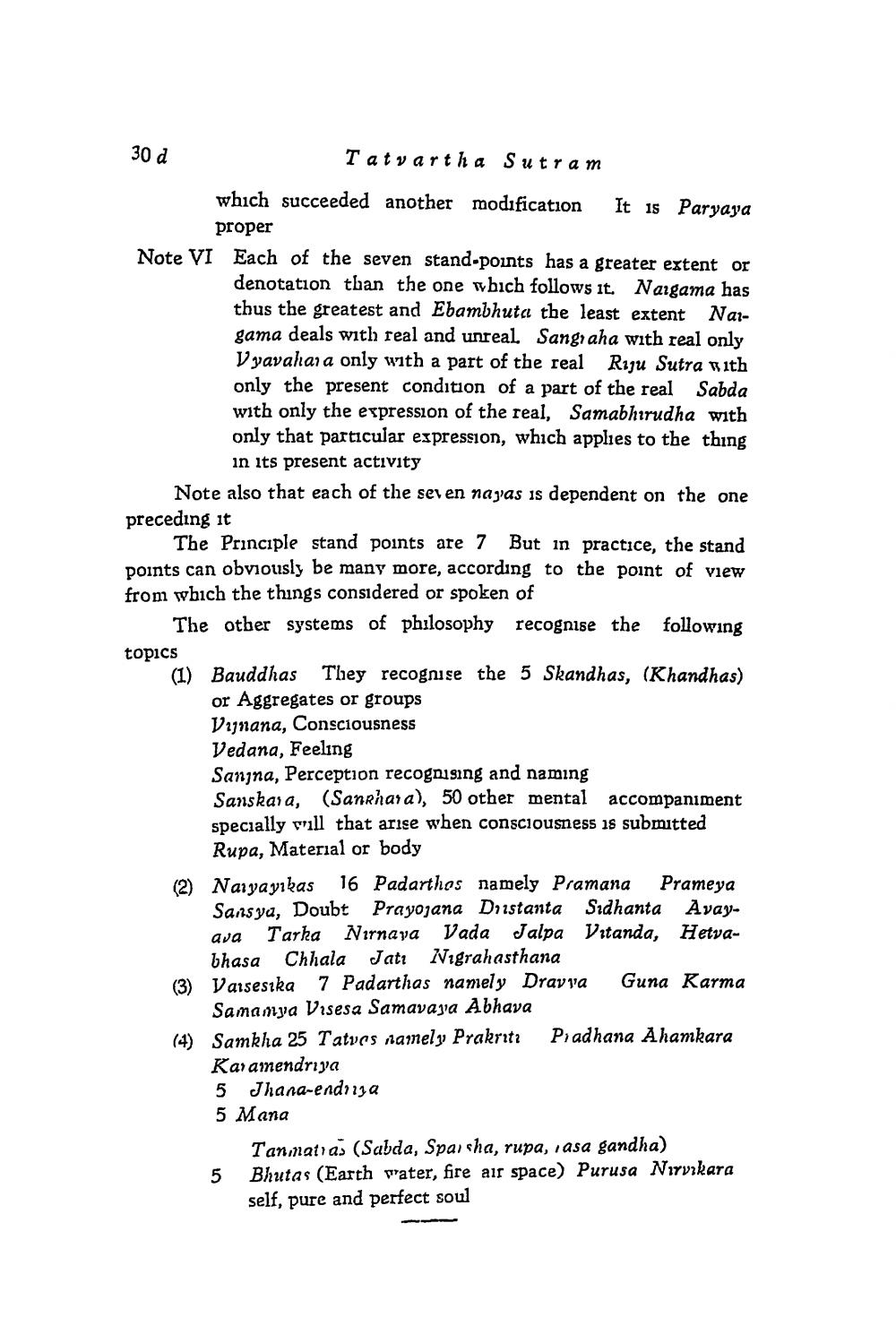________________
30 d
Tatvartha Sutram
which succeeded another modification It is Paryaya
proper Note VI Each of the seven stand-points has a greater extent or
denotation than the one which follows it. Nargama has thus the greatest and Ebambhuta the least extent Nazgama deals with real and unreal Sangraha with real only Vyavaha, a only with a part of the real Riu Sutra with only the present condition of a part of the real Sabda with only the expression of the real, Samabhirudha with only that particular expression, which applies to the thing
in its present activity Note also that each of the seven najas is dependent on the one preceding it
The Principle stand points are 7 But in practice, the stand points can obviously be many more, according to the point of view from which the things considered or spoken of
The other systems of philosophy recognise the following topics (1) Bauddhas They recognise the 5 Skandhas, (Khandhas)
or Aggregates or groups Vinana, Consciousness Vedana, Feeling Sanjna, Perception recognising and naming Sanskara, (Sanrhara), 50 other mental accompaniment specially will that arise when consciousness is submitted
Rupa, Material or body (2) Narya yıkas 16 Padarthos namely Pramana Prameya
Sans ya, Doubt Prayojana Drustanta Sidhanta Avayava Tarka Nirnaya Vada Jalpa Vatanda, Hetva
bhasa Chhala Jatt Nigrahasthana (3) Varsesika 7 Padarthas namely Dravia Guna Karma
Samamya Visesa Samavaya Abhava (4) Samkha 25 Tatves namely, Prakritz Pradhana Ahankara
Karamendriya 5 Jhana-end123 a 5 Mana
Tanmatras (Sabda, Sparsha, rupa, i asa gandha) 5 Bhutas (Earth water, fire air space) Purusa Norvikara
self, pure and perfect soul




